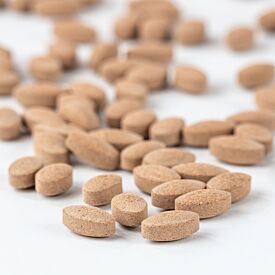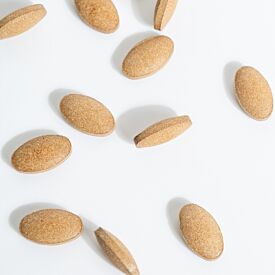Encountering an Angry Prostate
The vast majority of men hardly even realize that they have a prostate gland. Most men become aware of it in their later years (when they turn sixty or so), as they may begin to experience some congestion in and enlargement of the gland. And then there are those who get an unwelcomed surprise of long periods of heat and discomfort in the gland during their pitta years, around their forties.
Such a small gland can have a profound effect on a man’s quality of life. In this article, we will learn about the prostate gland from both a western and Ayurvedic perspective. We will also become more aware of what creates heat in the gland and what the signs of heat in the prostate gland are so that you can pick up on those early signals.
The Anatomy of the Gland
The prostate gland is just about the size of a walnut. It sits right beneath the bladder and surrounds the urethra, the tube that carries the urine from the bladder and out of the penis. While it is a gland, it is actually composed of 30% fibrous (strong, structural, connective tissue) and muscular tissue (to help in ejaculation) and 70% glandular tissue (the tissue that produces the secretions).
This tiny gland secretes a mucous fluid that accompanies the sperm during ejaculation. Because it has a higher pH (is alkaline in nature), its function is to protect the sperm from being destroyed by the lower pH (acidic) of the vagina, thereby increasing the lifespan of the sperm within the vaginal tract.
Ayurvedic Anatomy
The prostate gland is technically part of shukra dhatu (the male reproductive tissue which is the seventh and deepest tissue layer and whose byproduct is the life-giving ojas). What we often forget, though, is that it also has a very intimate relationship with the mutra vaha srotas (the channel that carries urine). Even when we look at it from a western anatomical perspective, we see that this gland ejects directly into the urine-carrying channel, the urethra.
Understanding that connection helps us realize the opportunity to access and soothe this part of shukra dhatu through the mutra vaha srotas. The herbs and substances that soothe and cool the urine channel can also bring those qualities to the prostate gland and those things that decongest and bring flow to the urine channel can do so to the prostate, as well.
The Heated Prostate
Interestingly, heat within shukra dhatu is often associated with heat elsewhere in the pelvis. Men with heat in the prostate often also have chronic discomfort in the pelvis, irritable bowels, and feel fatigued for long periods of time.1 Accumulated heat in the body settles within the pelvis and spreads to various parts of the pelvis through nerves (majja dhatu) and blood vessels (rakta dhatu). For instance, the nerves that supply the bladder have common roots as the nerves that supply the bowel.
Signs of heat within the prostate include:
- Discomfort in the lower abdomen or back, penis, perineum, or with ejaculation
- Burning with urination
- Needing to urinate more frequently
- Seeing blood in the semen
Note that these symptoms are similar to those of a urinary tract infection or infection within the prostate. While an infection can certainly bring heat to the prostate, that topic is beyond the scope of this article and it is important for the client to visit with a qualified health care provider (particularly if the client is experiencing fever) to rule that out.
Causes of Excess Heat in the Prostate
Before heat can make its way to the pelvis, it has to first accumulate centrally. Here are a few causes of excess heat in the body.
- Excess spicy, salty, sour foods
- Excess caffeine intake
- High alcohol intake
- High stress and pitta emotions (anger, competition, jealousy, envy, irritation)
- Possible causes of inflammation in the body (gluten, dairy, sugar)
- Hot temperatures or summer season
Once it has accumulated and made its way to the pelvis, heat can stagnate within the pelvis when there is not proper outflow from its elimination channels. As a gland, the prostate likes to flow as does its neighboring channel, the urine channel. These habits counter natural flow and create stagnation.
- Suppression of urges (urination, bowel movements, ejaculation)
- Poor water intake, decreasing the fluidity of the secretions and the frequency of urination
- Increased pressure on the gland (bicycle seat) or sitting for long periods of time
Use the prostate to see if there is high pitta in the body and if it is time to cool down. Also use it as a signal that the pitta is having a hard time making its way out of the body because there is poor flow. Supporting both pitta reduction and good flow will support the overall health of your client. In the next article, we will discuss how to do just that and how to maintain a healthy prostate.
References
1 Michel Pontari. Chronic Prostatitis/Chronic Pelvic Pain Syndrome. UpToDate. March 03, 2015.








